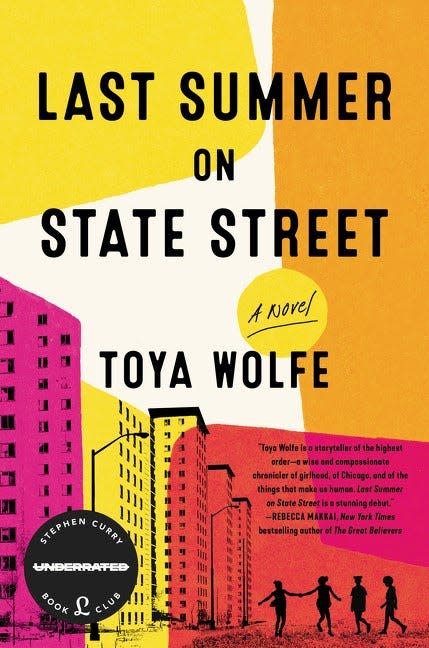In Toya Wolfe's 'Last Summer on State Street,' girls navigate dangers of life in Chicago public housing

For decades, people traveling through the south side of Chicago saw them looming to the side of I-94.
More than two dozen high-rise buildings stretching over two miles, the Robert Taylor Homes were once the country's largest public housing project. The overcrowded buildings, like other high-rise public housing, became known for gang violence, drugs and other problems associated with grinding poverty and de facto segregation.
But the Taylor buildings weren't simply a talking point for pundits and planners. They were childhood homes for thousands of people, including actor Mr. T, former Massachusetts Gov. Deval Patrick and writer Toya Wolfe.
Wolfe's debut novel, "Last Summer on State Street" (William Morrow), takes us inside Building 4950 for several fateful months in the lives of four girls. Wolfe will talk about her novel during a Sept. 28 in-person event at Milwaukee's Boswell Books.
Narrator Fe Fe (Felicia) remembers the summer of 1999, when she had a complicated friendship with the quiet Precious, from an intensely religious family, and moody Stacia, from a clan of Gangster Disciples. They connect mostly around their mutual love of double Dutch.
MORE: 45 new books for summer reading in 2022
Impulsively, Fe Fe invites a girl she'd noticed named Tonya to join them jumping rope. As an adult, she looks back on that invitation as the action that destabilized her friendships. "The day our crew grew to four, that's when everything terrible started," the grown Fe Fe declares.
Housing authorities had already begun demolishing the Taylor buildings one by one, moving residents to other places — but only residents deemed "Lease Compliant," a source of anxiety for nearly everyone.
Precious and Fe Fe's mothers help their girls navigate this dystopian environment as safely as they can. Even though they don't have to, these two bright girls go to summer school for the safety and enrichment they find there.
But strong parenting can't stop an older brother from being initiated into gang life. As Fe Fe describes life in 4950, some reckoning with gangs was almost inevitable for young males in the Taylor homes.
In contrast, Tonya's drug-addicted mother is worse than no help for her daughter, and possibly a catalyst for her fate.
Wolfe describes several shootings in her novel, vividly capturing how the chaos, fear and uncertainty rattles these families — and how the round-everyone-up response of police further rattles them.
Her compassionate novel succinctly delineates her characters as individuals, even if people driving past the Taylor homes never grasp that.
"Maybe the worst part about growing up in public housing," Fe Fe tells us, "is that people think your body is public, too. That even before you are born, your Black body already belongs to the owners of the land."
Contact Jim Higgins at jim.higgins@jrn.com. Follow him on Twitter at @jhiggy.
If you go
Toya Wolfe will speak about "Last Summer on State Street" at 6:30 p.m. Sept. 28 at Boswell Books, 2559 N. Downer Ave. Admission is free, but advance registration is required. Visit boswellbooks.com.
Our subscribers make this reporting possible. Please consider supporting local journalism by subscribing to the Journal Sentinel at jsonline.com/deal.
DOWNLOAD THE APP: Get the latest news, sports and more
This article originally appeared on Milwaukee Journal Sentinel: Girls navigate life in public housing in 'Last Summer on State Street'
